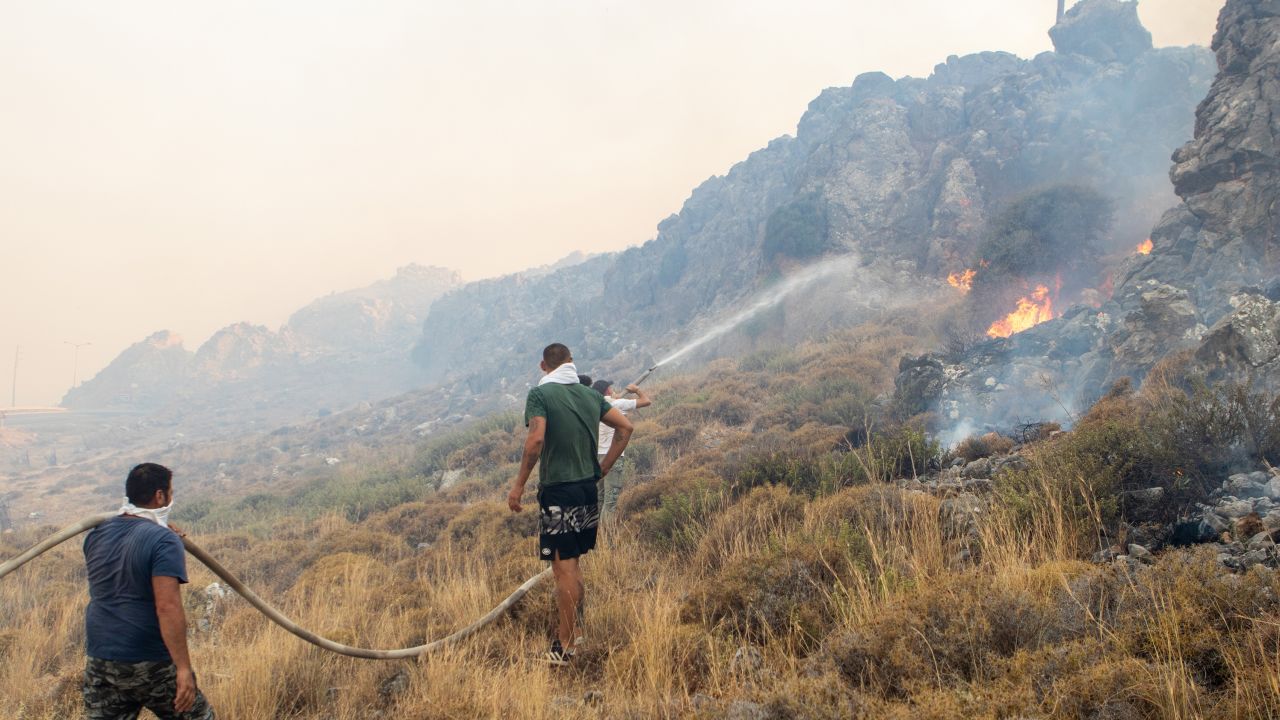Extreme heat waves across three continents this month were made significantly more likely by the human-caused climate crisis, according to a new analysis released Tuesday as temperatures are still blazing in parts of the Northern Hemisphere.
The “heat hell” searing parts of the United States and southern Europe would have been “virtually impossible” without climate change, while climate change made China’s heat wave at least 50 times more likely, according to a rapid attribution analysis from the World Weather Attribution initiative.
The WWA, a group of international scientists who assess the role of climate change in extreme weather events, spent a week analyzing the dangerous heat waves that have swept the Northern Hemisphere in July, destroying crops and livestock, triggering wildfires, exacerbating water stress and killing people across three continents.
Temperatures in Death Valley reached 128 degrees Fahrenheit (53.3 Celsius) this month and the city of Phoenix has experienced a record-smashing 25 consecutive days of temperatures hotter than 110 degrees Fahrenheit (43.3 Celsius).
China posted an all-time national high temperature at 52.2 degrees Celsius (126 Fahrenheit) earlier this month. And in Europe, local records were broken across parts of Spain and Italy as temperatures edged towards Europe’s all-time record of 48.8 degrees Celsius (119.8 Fahrenheit).
To understand the extent to which the climate crisis affected the likelihood and intensity of this July’s extreme heat, the WWA team examined weather data and computer models to compare the world’s current climate – which is around 1.2 degrees Celsius warmer than the pre-industrial era – with the climate of the past.
They found that “the role of climate change is absolutely overwhelming,” said Friederike Otto, a senior lecturer in climate science at the Grantham Institute for Climate Change and the Environment at Imperial College London.

If humans hadn’t heated the planet by burning oil, coal and gas, these kinds of blistering heat waves would be extremely rare, Otto told reporters on Monday. But, as the world continues to burn fossil fuels, they are no longer unusual, she said.
In today’s climate, extreme heat waves like those the world is currently experiencing are expected once every 15 years for the US and Mexico, once every 10 years in Southern Europe and once every five years for China, the analysis found.
The scientists found that climate change not only drastically increased the likelihood of these heat waves happening, but it is also making them hotter.
Planet-heating pollution made Europe’s heat wave 2.5 degrees Celsius hotter, the North American heat wave 2 degrees Celsius hotter and China’s heatwave 1 degree Celsius hotter, according to the report.

Worse could be in store. If the planet’s average temperature rises to 2 degrees Celsius above pre-industrial levels, extreme heat waves can be expected every two to five years, according to the report.
“It could well be that this is what will be a cool summer in the future, if we don’t stop burning fossil fuels rapidly,” Otto said.
The scientists said that the developing El Niño, the natural climate pattern with a warming impact, likely helped push up temperatures a little – but that global warming from burning fossil fuels was the main reason the heatwaves are so severe.
“The result of this attribution study is not surprising. The world hasn’t stopped burning fossil fuels, the climate continues to warm and heatwaves continue to become more extreme. It is that simple,” said Otto in a statement.
But the study should not be interpreted as evidence of “runaway warming” or “climate collapse,” she added.
“We still have time to secure a safe and healthy future, but we urgently need to stop burning fossil fuels and invest in decreasing vulnerability. If we do not, tens of thousands of people will keep dying from heat-related causes each year.”
Heat waves are one of the deadliest natural hazards. More than 61,000 people died of heat-related deaths during Europe’s record-breaking heat wave last year, according to a recent study.
In Mexico, more than 100 people have died due to heat since March, while countries from the US to Italy have reported steep jumps in hospital admissions as people struggle to cope with soaring temperatures.
Society must rapidly reduce planet-heating pollution, the report authors said. But they also called on countries and cities to adapt health, urban planning and energy systems, as well as accelerating the roll-out of heat action plans to better prepare for the extreme heat the climate crisis has already locked in.
Richard Allan, professor in climate science at the University of Reading in the UK who was not involved in the study, said fluctuating weather patterns determined the location and timing of these heat waves.
“But warming of the climate is promoting moderate heat waves to top off the league extremes and what would have been top of the league heat waves into events impossible in a climate without the heating effects of fossil fuel greenhouse gas emissions.”
World - Latest - Google News
July 25, 2023 at 04:32PM
https://ift.tt/OvPaVYu
Heat waves in US and Europe would have been ‘virtually impossible’ without climate change, new report finds - CNN
World - Latest - Google News
https://ift.tt/ADXWZLK
Bagikan Berita Ini
















0 Response to "Heat waves in US and Europe would have been ‘virtually impossible’ without climate change, new report finds - CNN"
Post a Comment